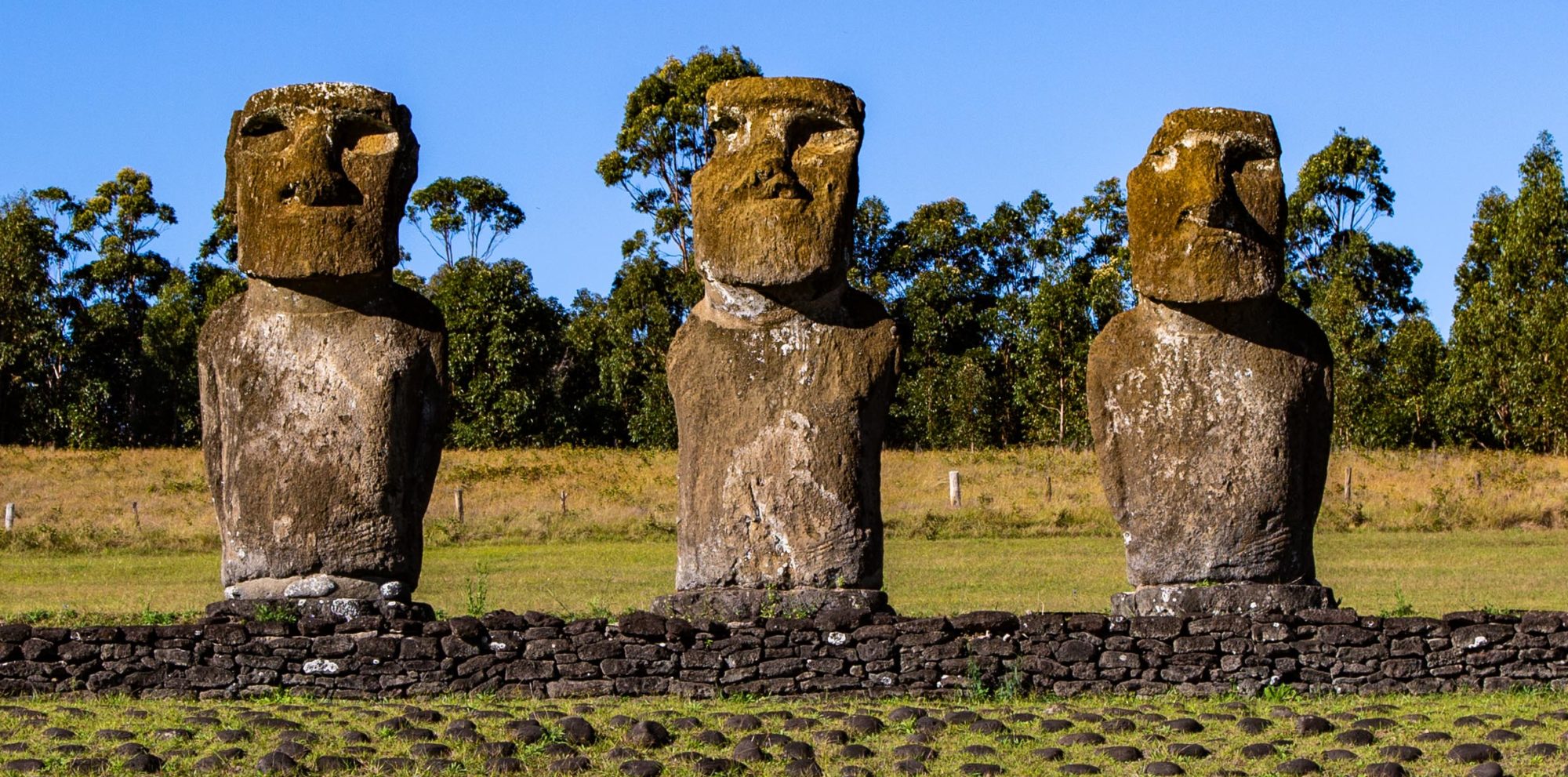We have spent the last few days not only visiting moai, we also got a chance to see where they were created. Rapa Nui has many extinct volcanic vents but at Rano Raraku the easily carved compressed volcanic ash is more readily available. A feast for the eyes, Rano Raraku was active as a “moai quarry” for 5 centuries until the late 1860s. There are several hundred moai in all states from still being carved out of the volcanic ash to failed flat on their face during their first few steps to their final destinations. Not all the moai were intended to be walked to an ahu, the Rano Raraku quarry served as a school as well educating the next generation of carvers.
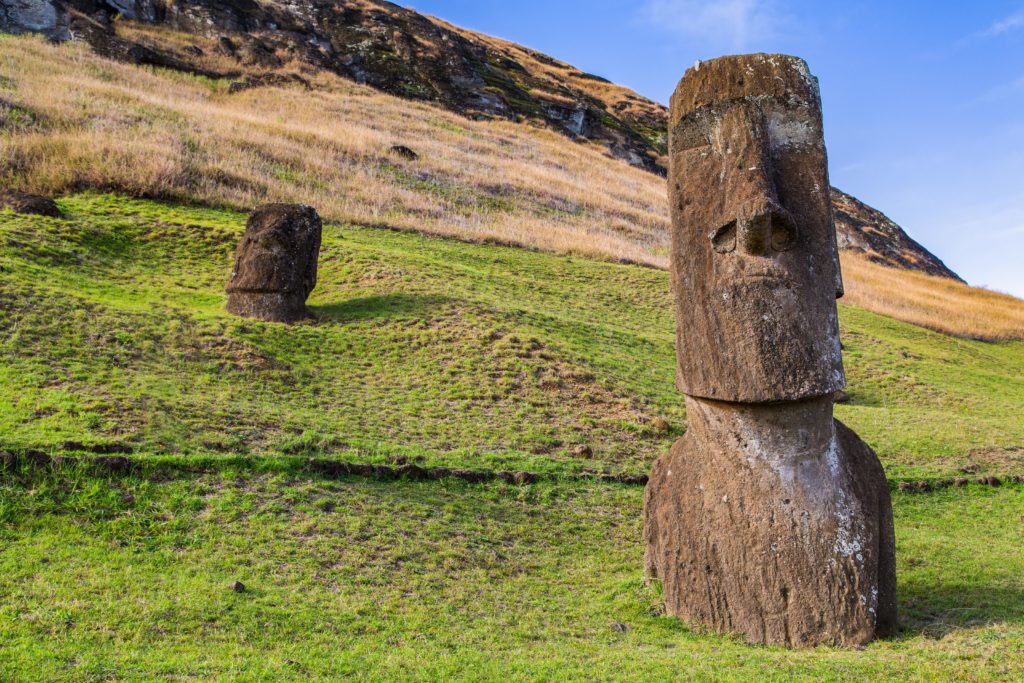
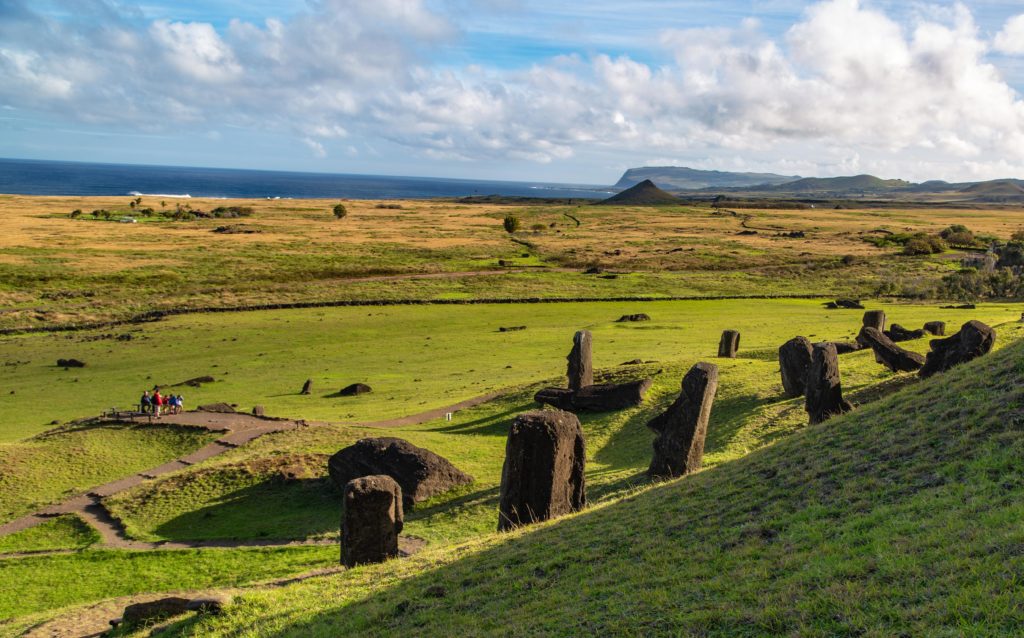
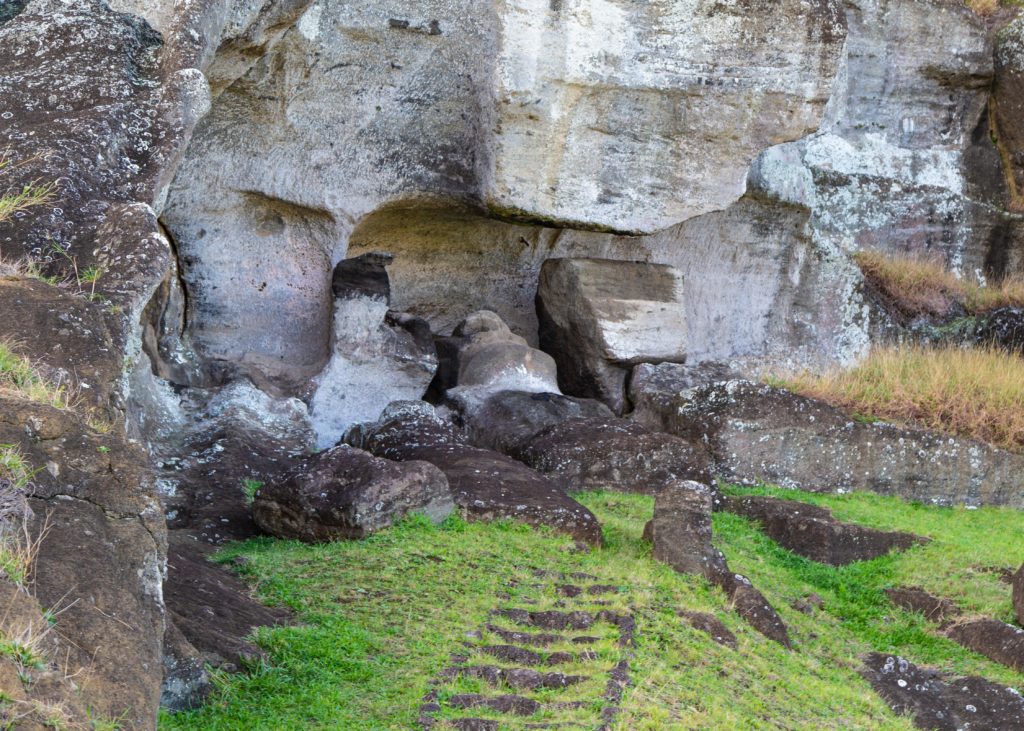
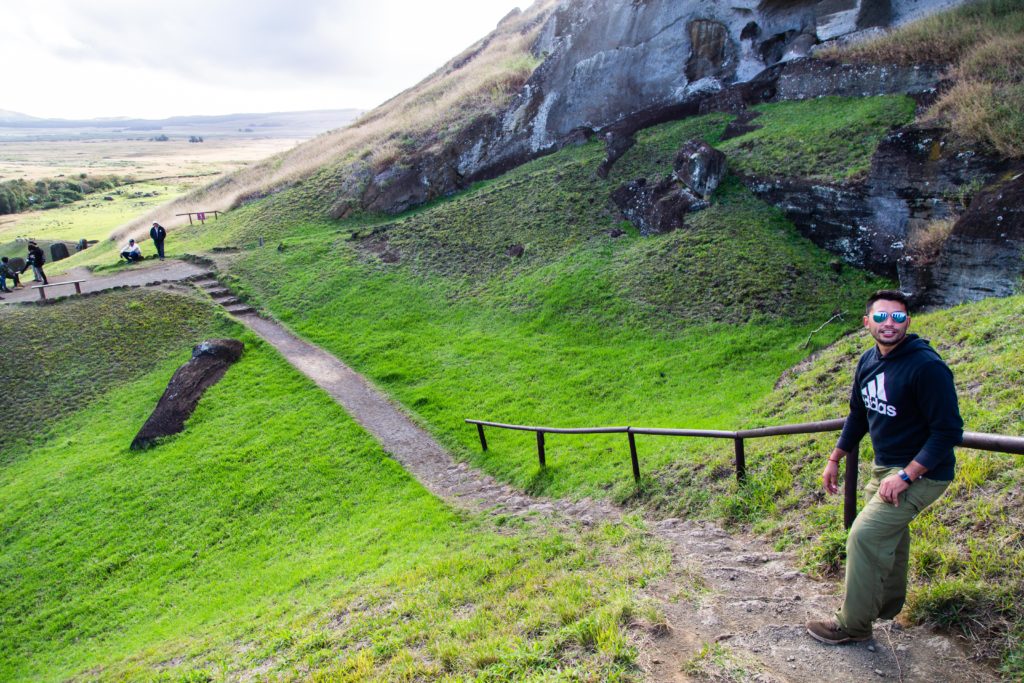
Creating a moai was an interesting process, carved using tools made from harder stone including basalt. at many different angles alway on their backs. The initial rectangle shape was created then further details were added, facial features first then neck, arms and hands. This process allowed the creators to check the integrity of the proto-moai at each step. Once these inital details were added the moai was released from the rock by chipping away the back then sliding the released moai down the hill to a hole where the the moai was placed upright. Again these steps were fraught with danger, many moai failed at the release process or got away from the carvers sliding down the hill. Deaths occurred during these steps. If the moai successfully made it upright it could be easily further worked, back details were added, the moai was polished with pumice then it was ready for delivery.

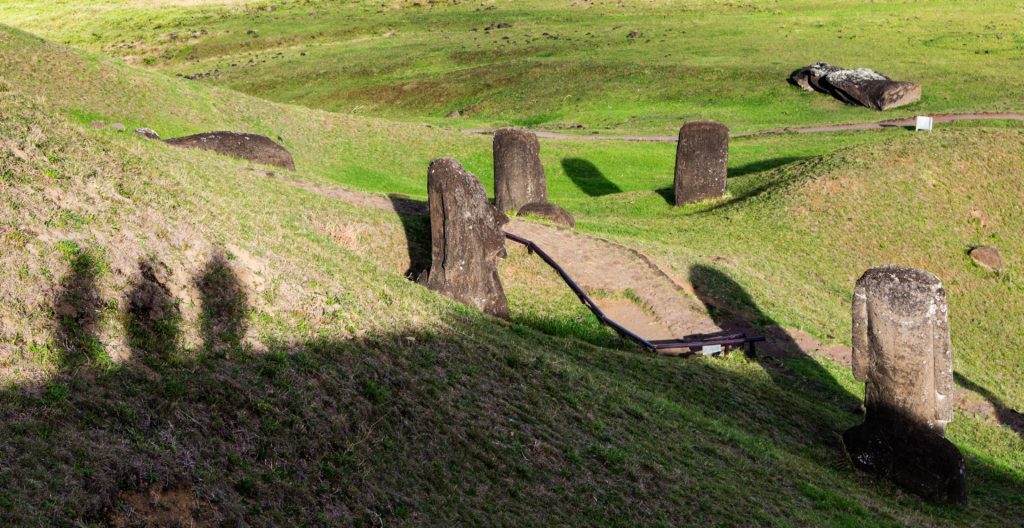
Having a moai on your ahu was a status symbol indicating the wealth and status of those who commissioned the moai. This was true from the kings who had moai at Anakena, the founding place of Rapa Nui (according to oral tradition) to the moai at Ahu Te Pito Kura, the last and largest moai ever placed and ( again according to oral tradition) ordered by a widow in the memory of her late husband. Honey, can I have one when I go? Say yes, I will never know!
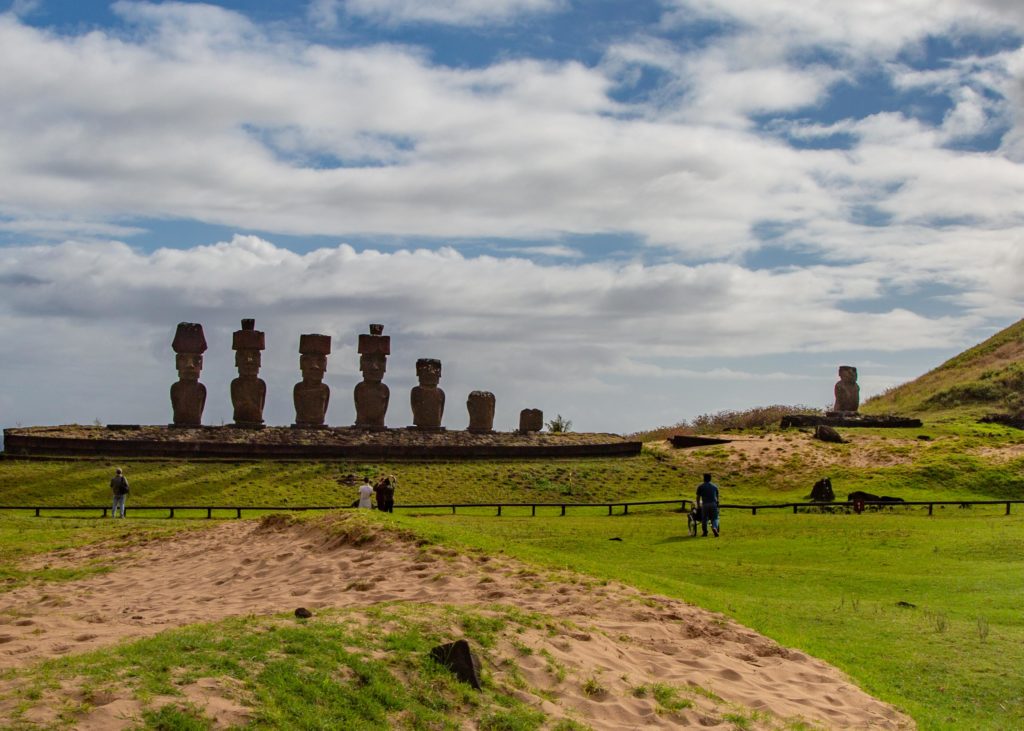
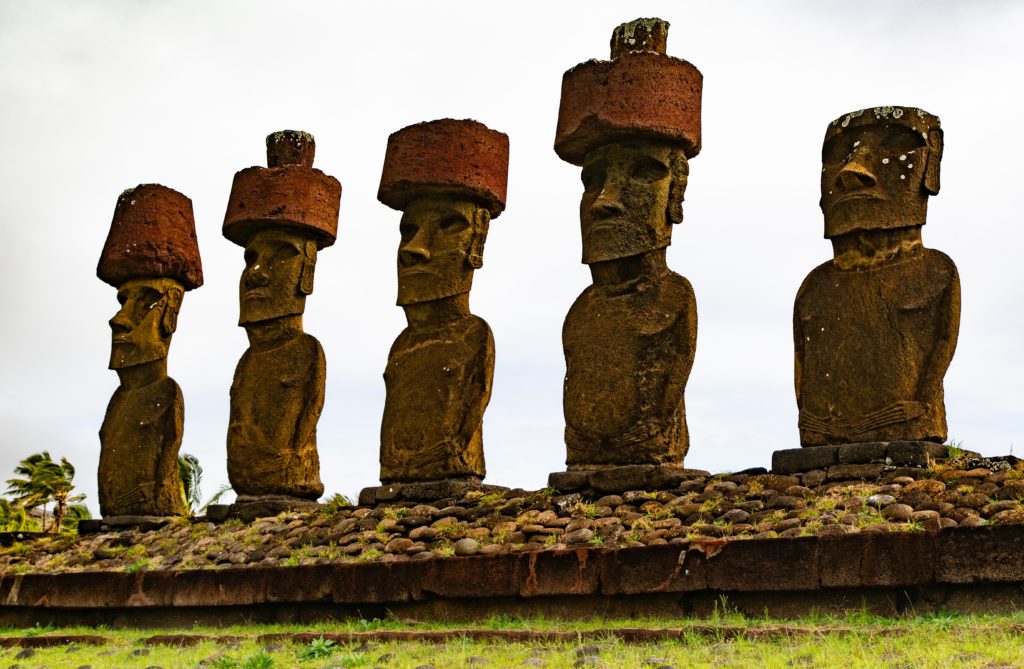
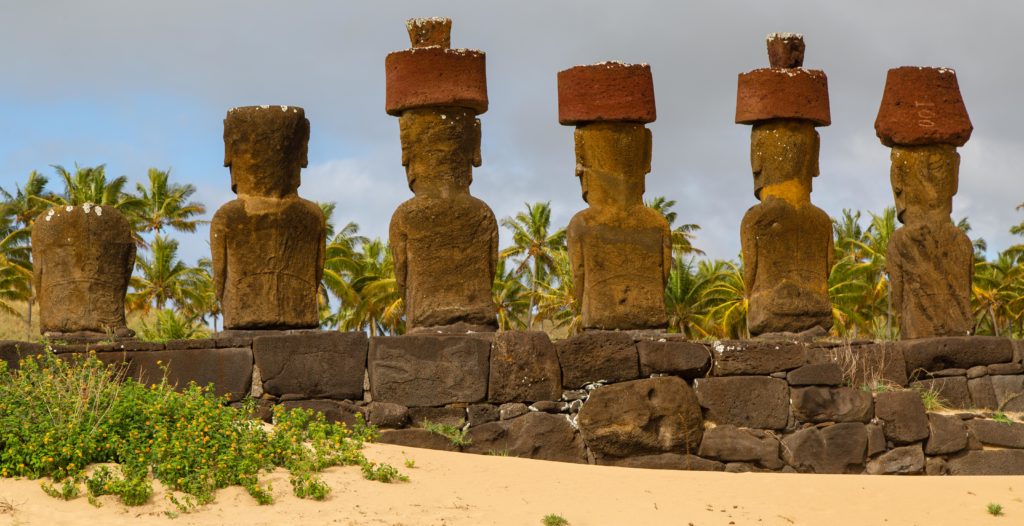
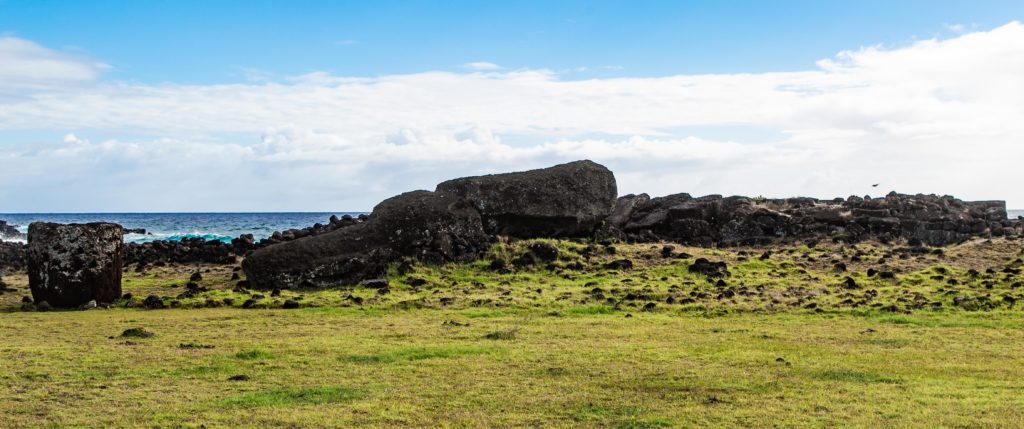
Not all ahus have mori, they lesser folk were also buried ahus just not topped with mori. Sounds like shrines today as well.
Like Hawaii, the island of Rapa Nui was created on a volcanic hotspot which it the island has since drifted away from due to plate tectonics. Three volcanos emerged from the ocean, first Mr. Poike, then Mt. Rano Kau and finally Terevaka who’s flows united with the other two volcanos creating Rapa Nui. The last eruptions that formed the island finished some 20 centuries before the islands were reached by man.
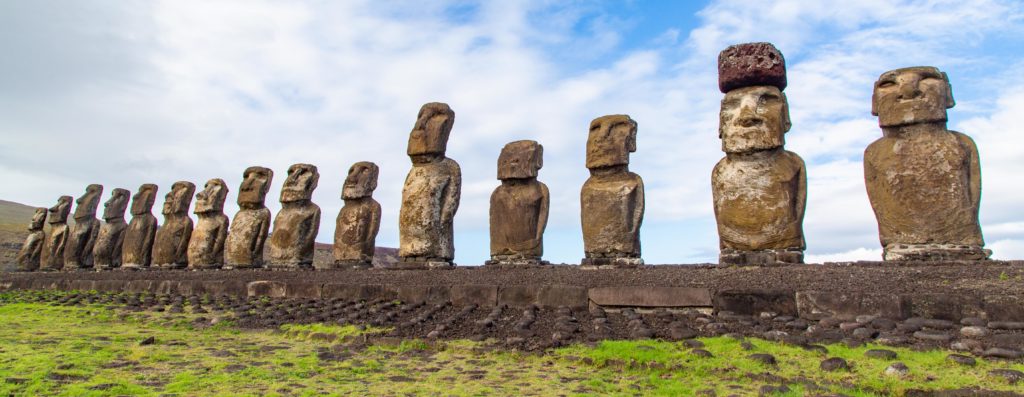
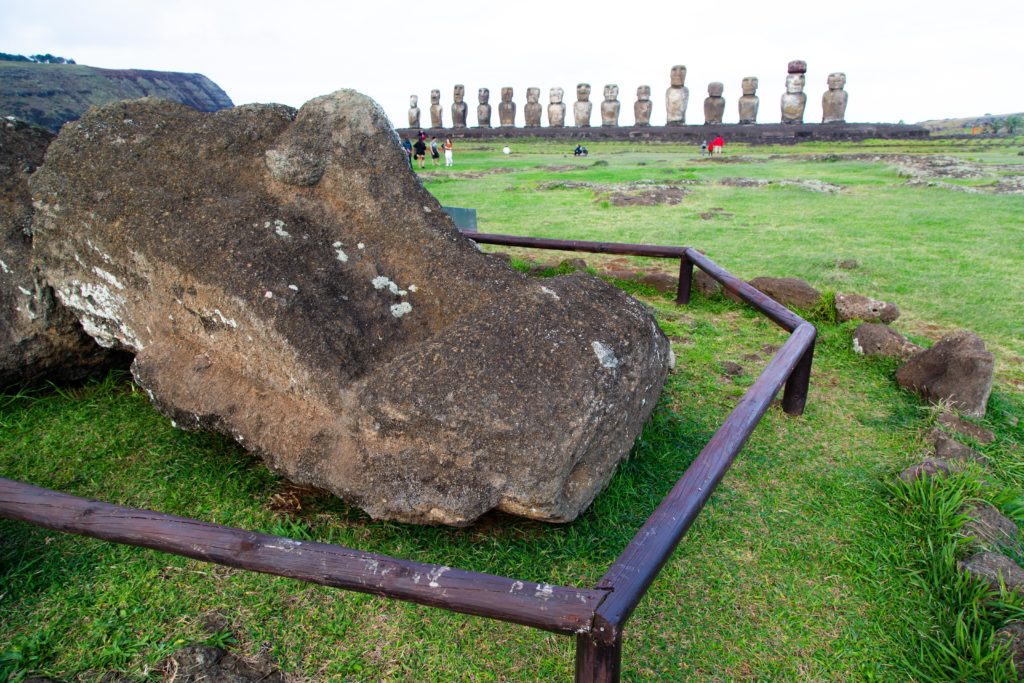
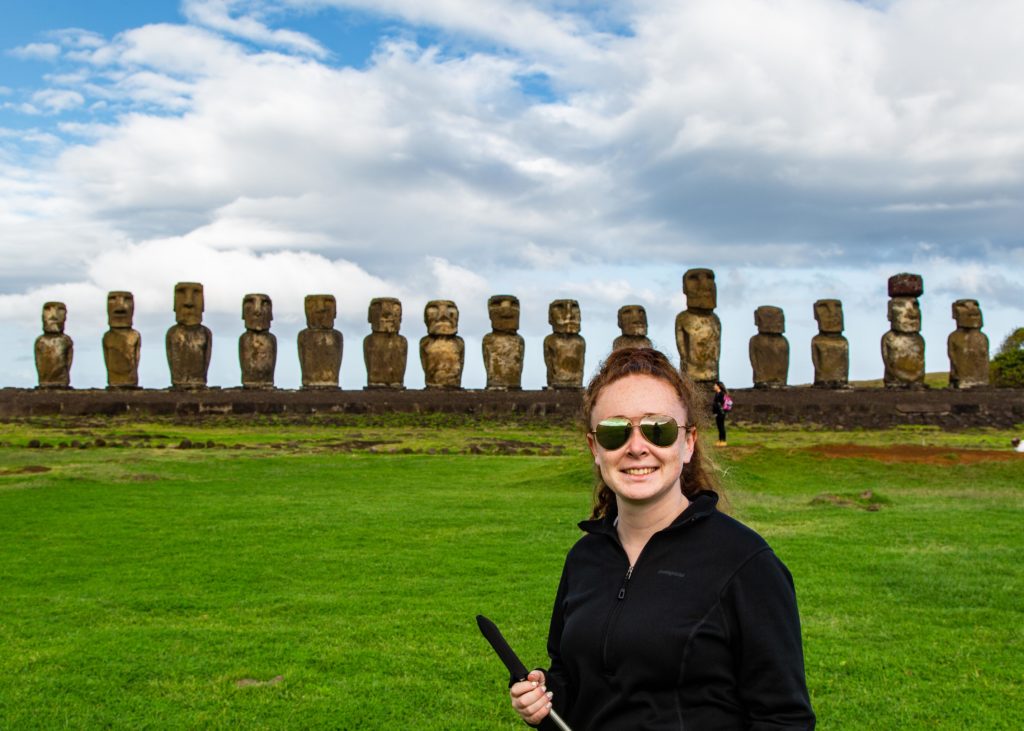
All this knowledge and facts I have been able to pass along in this blog is due to our tour guides at Explora Rara Nui. I like this chain, unlike other hotels on the island this one is all inclusive, food, drink, tours and transportation are included in the price. The guides are friendly and knowledgable and help you set up your days here to get the most out of your visit to the island. The food is some of the best we have had in our travels, glad we are hiking, we are eating a lot. Explora has several locations in South America and we recommend checking them out.
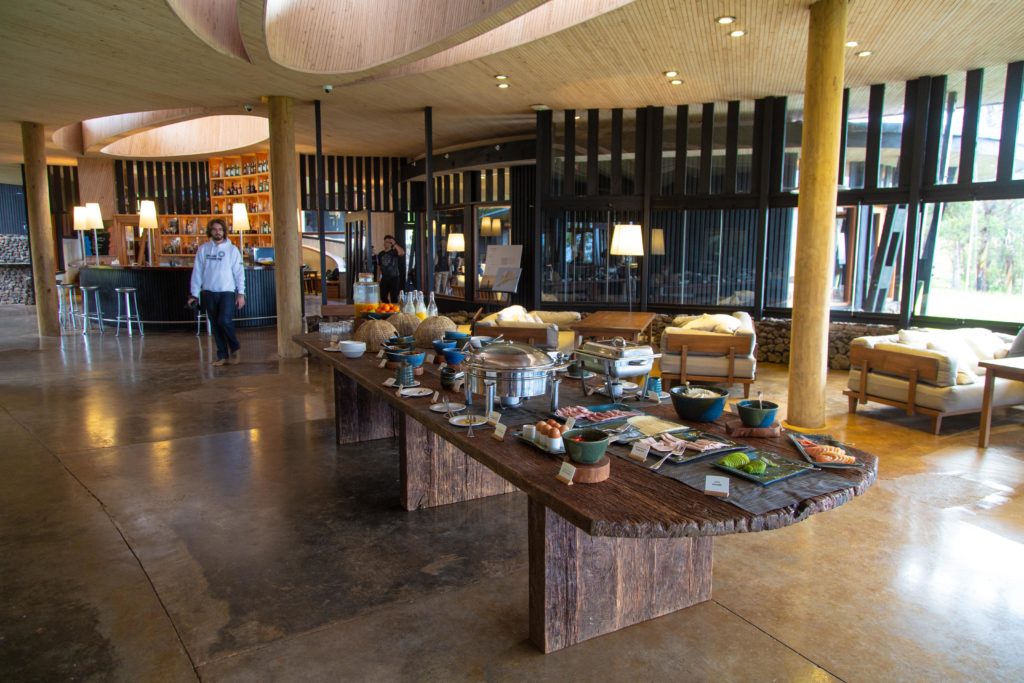
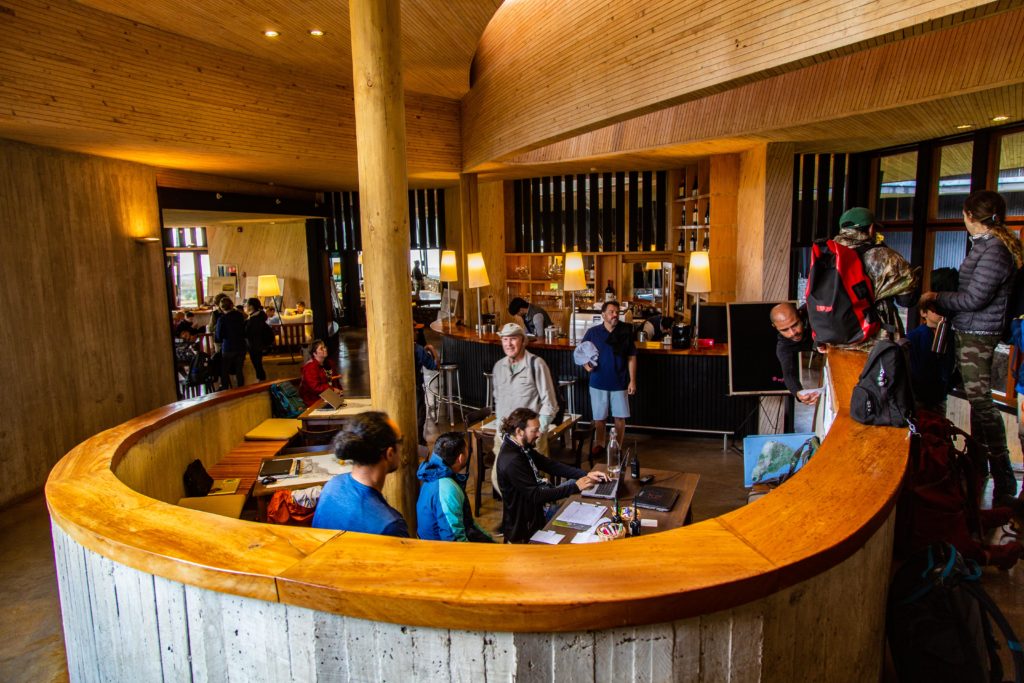
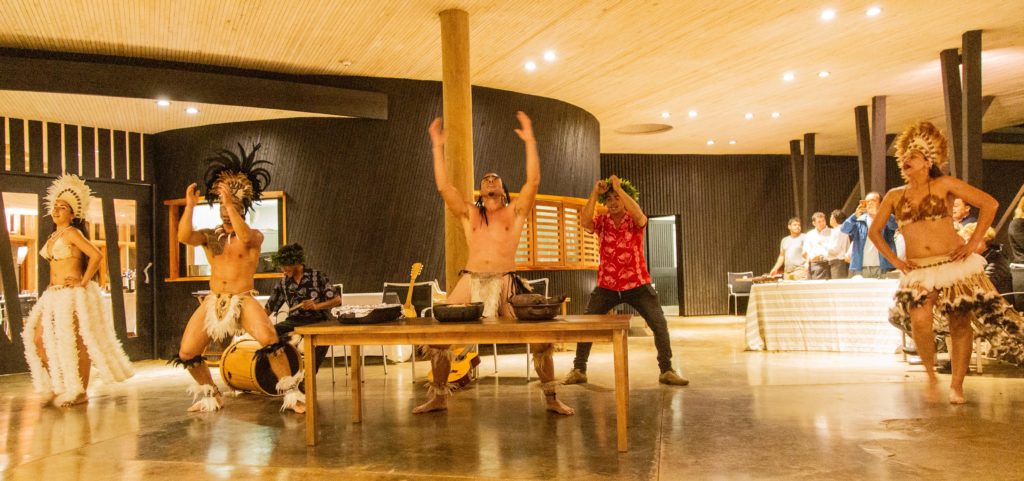
End of part 2.
